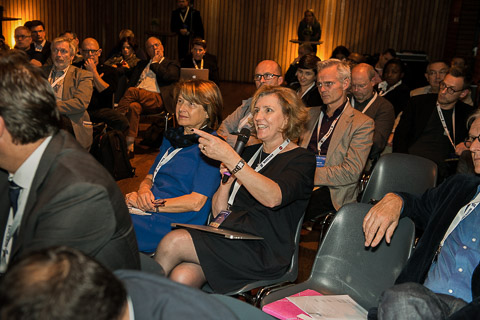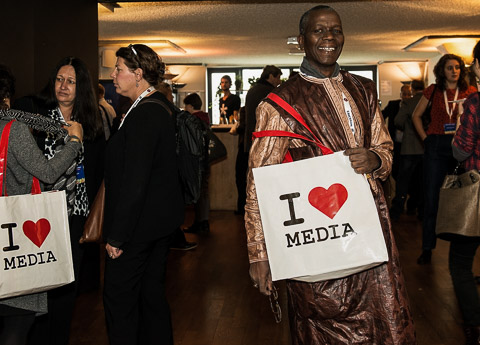FIAT/IFTA Masterclass: Creating & Determining Value

Students from the MA programme Preservation and Presentation of the Moving Image participated in the 2014 World Conference of FIAT/IFTA. They share their impressions in a series of blog reports. Frances Maciver wrote about the first masterclass.
After day one of the conference, budget cuts emerged as a common thread. They're a significant obstacle to the goals of archivists and their ability to operate. As such the masterclass Creating value from your archives: how to go online and generate revenue, run by Daniel Teruggi of INA piqued my interest and perhaps the vane hopes of archivists in attendance.
If any attendee had naïve unspoken desires of finding fortune for their archive, those were dashed early in the presentation. It was made clear that this was not an opportunity for archives to make real money, but an opportunity for cultural heritage institutions to slightly increase their revenue.
Teruggi covered five different economic models as to how to generate revenue through online access; free, the excellent portmanteau freemium, payment, community and other potential services such as education. Some models, such as the “free” model using banner advertising and the such are not well suited to cultural heritage institutions, due to typical traffic not being high enough to generate significant revenue. However INA has had success using several kinds of these models.
 Bríd Dooley from RTÉ during a Q&A session. Photo Credit: Oscar Timmers.
Bríd Dooley from RTÉ during a Q&A session. Photo Credit: Oscar Timmers.
One of the most significant issues was the pressure to make money from collections that have high cultural, but low commercial value. In the Q&A it was asked why INA uses so many different models. This ultimately came down to the nature of the collections. With their digitization of TF1’s archives, mainly video, they were able to take all profits from the first four years. This was only profitable because of their commercial value. While all of these models could potentially be adopted, the consideration of the whether an archive holds collections of commercial or cultural value should inform economic model chosen if it is to generate revenue.
Another issue raised in the Q&A session was that each of these models require a significant financial and time investment. This was mostly to grow a customer base, or generate enough hits before an institution can access any profits. With the already strained financial climate that archives are working in, it is hard to say that they should go down the route of attempting to generate revenue through online services and advertising. Terrugi made the point that if an institution managed to achieve 5-10% of their revenue through this avenue, this would be a significant achievement. Even with this comparatively small amount of revenue this can go towards the further support of the main goals and activities of cultural institutions. As long as an economic model is carefully selected, going online to generate revenue has the potential to pay off as a well-calculated gamble.
 Conference attendees show off their goodie bags. Photo Credit: Oscar Timmers.
Conference attendees show off their goodie bags. Photo Credit: Oscar Timmers.
More info
- See more photos, presentations and papers over at the FIAT/IFTA website
- The EUscreen project presented a status report in 2011 investigating some of these business model perspectives
